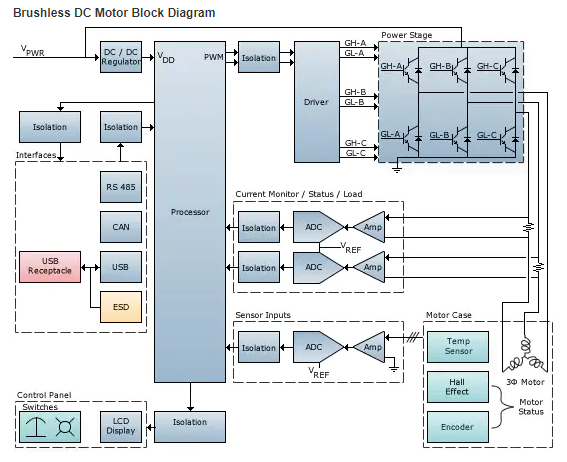Motor Control
Motor Control Applications - Brushless DC Motor
A brushless DC (BLDC) electric motor is likened to a motor with brushes, but turned “inside-out.” A BLDC motor has a rotor with permanent magnets and the stator contains the windings. Older motors with brushes rely on the brushes to conduct electrical current between moving parts. This works, but the brushes wear out due to continuous physical operation. BLDC is a term applied to motors running on DC or AC current; both do not have brushes, but the stator windings differ somewhat. Thus, despite its name a brushless DC (BLDC) motor does not operate directly from a DC voltage source. The BLDC also has an electronic commutation system.
Brushed motors have a commutator (a mechanical rotating switch that periodically reverses the current between the rotor and external circuitry.) Brushless DC motors are often small, and range from a few watts to tens of watts. BLDC motors have been in commercial use since the 60s and the advent of solid state semiconductors, whereas brushed motors have been in use since the origin of motors in the late 1800s.

This design is for reference only. The design, as well as the products suggested, has not been tested for compatibility or interoperability.